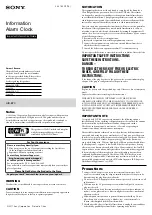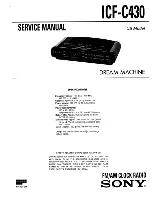
An Extract From Dance’s “Electronic Counting Circuits”
Chapter 5 - E1T Decade Counting Circuits
The principle of operation of the Mullard/Philips
E1T decade counter tube is fundamentally
different from that of all other types of counting
tube. The E1T is a high vacuum tube which has
been especially designed for counting purposes;
it has an indirectly heated cathode. The E1T is
basically a small cathode ray tube of special
design without any vertical deflecting plates and
of about the same size as an octal based radio
receiving tube. It has the advantage of being a self
indicating device, but it cannot easily be used to
control digital indicator tubes because the same
electrodes are always being employed in the E1T
whatever the state of the count. The method of
readout is unique. An H.T. supply of 300V is
adequate for most E1T circuits. The E1T is not a
gas filled device and, therefore, its maximum
operating speed is not limited by ionisation and de-
ionisation times. All E1T tubes can operate at counting speeds up to at least 30,000 pulses per
second, but about 75 % of all the tubes can be used in slightly more complicated circuits for
counting at frequencies up to 100,000 pulses per second. Operation at frequencies of the order
of one million pulses per second has been reported. The form and the dimensions of the E1T are
shown in Fig 5.1.
5.1 - READOUT
The E1T tube employs a ribbon shaped electron beam of rectangular cross section which has ten
stable positions in the tube. A small portion of the beam passes through one of the ten holes in
the anode and strikes a fluorescent coating on the inside of the tube envelope so that a vertical
green luminescent mark is formed in a position near to the digit which is to be indicated. The ten
digits themselves are marked on a paper mask which is fixed to the outside of the tube. The
beam advances at one step per input pulse until the digit 'nine' is reached, after which a further
input pulse will reset the beam to zero. Even digits are indicated as a mark on the upper strip of
fluorescent material and odd digits on the lower strip (see Fig. 5.1); this enables a clearer
indication to be obtained than would be possible if only one fluorescent strip were used to
indicate all ten digits. The beam itself is not deflected vertically in order to enable it to strike the
appropriate fluorescent strip, but is merely deflected horizontally across the tube. There are holes
placed alternately in the upper and lower parts of the anode; when the beam passes through one
of the upper holes an even digit is indicated, but at the next step it will pass through one of the
lower holes to indicate an odd digit. Only a small portion of the beam passes through a hole, the
remainder of the beam being intercepted by the anode.
5.1.1 - The Electrodes of the E1T
In order to show that the tube has ten stable positions, the somewhat complicated electrode
structure of the tube (shown in cross section in Fig. 5.2) must be studied. The conventional
Page 112
Version 1.0
Copyright Grahame Marsh/Nick Stock 2019
Fig 5.1 - The E1T Decade Counting Tube
(2)
Summary of Contents for An E1T Timepiece
Page 82: ...Page 82 Version 1 0 Copyright Grahame Marsh Nick Stock 2019 1 1 SAM3X8C schematic...
Page 108: ...Page 108 Version 1 0 Copyright Grahame Marsh Nick Stock 2019...
Page 109: ...Page 109 Version 1 0 Copyright Grahame Marsh Nick Stock 2019...
Page 110: ...Page 110 Version 1 0 Copyright Grahame Marsh Nick Stock 2019...
Page 120: ...E1T Data Sheet Page 120 Version 1 0 Copyright Grahame Marsh Nick Stock 2019...
















































